Over the past few weeks, I’ve had the chance to help on a wide variety of research projects that took place on and around the beautiful island of El Pardito. But before I get into the extraordinary stories of the sunsets, hikes, and inspiring research. I must explain how we got there …
The first segment of the research trip to Mexico consisted of waking up at 3am to go from San Jose Airport to San Diego Airport, then an Uber ride to the border, then a flight from Tijuana to La Paz, Mexico, arriving promptly at our destination at 3pm. This frantic travel time was 100% worth it. The next day we took a few boats to the barren rock island (to be correct, there is actually 1 cactus on the island), El Pardito. The crew on this research trip consisted of a few faculty and their graduate students from UCSC, a graduate student from UCSD, a turtle researcher from Costa Rica, an assisting researcher from Mexico, and myself.

Isla El Pardito, home to incredible fishermen and their families. (Image: Pinterest)
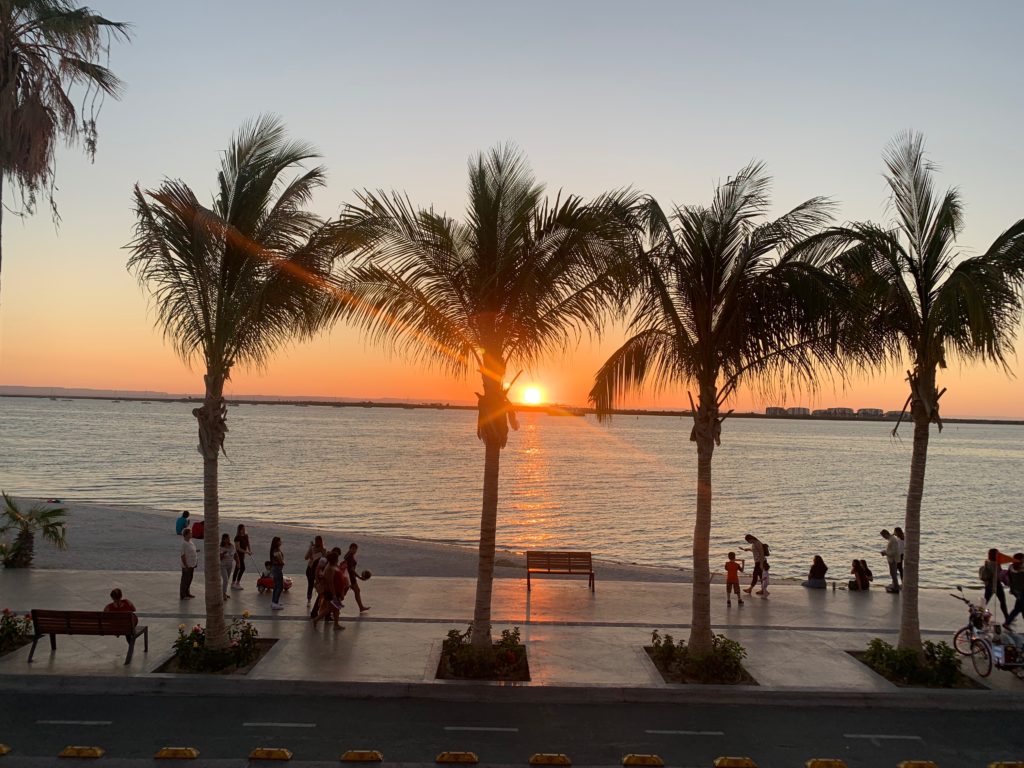
Sunset in La Paz
The first research project that I assisted on was focused on potential turtle food found in riverine mangrove habitat in the San Jose Estero (estuary). Our team (Unofficial Team Name: Dive Goddesses) identified and collected 100 samples (approx. 10 of each species) of sponges, tunicates, and vegetation within the Estero via snorkel. After collection, the goal was to run isotope analysis on all the samples so we had to dry them out. We made small boats out of aluminum foil for cleaned samples to dry in the sun. We not only learned several species identifications but also perfected our aluminum foil origami skills.
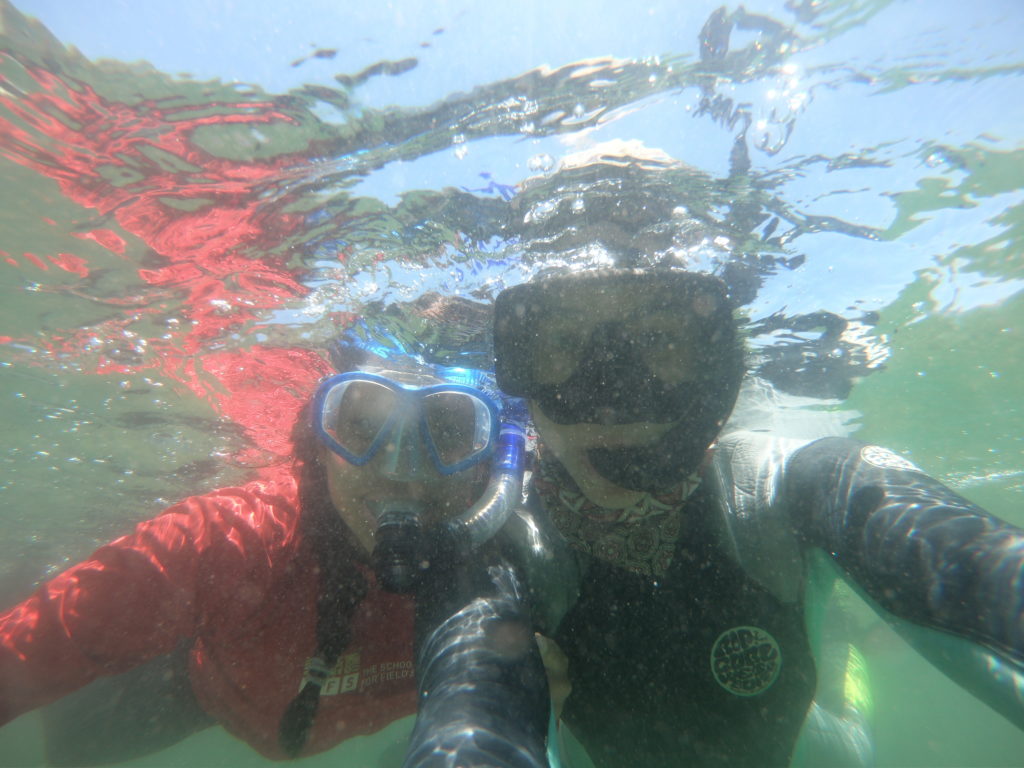
Myself and Andrea Paz
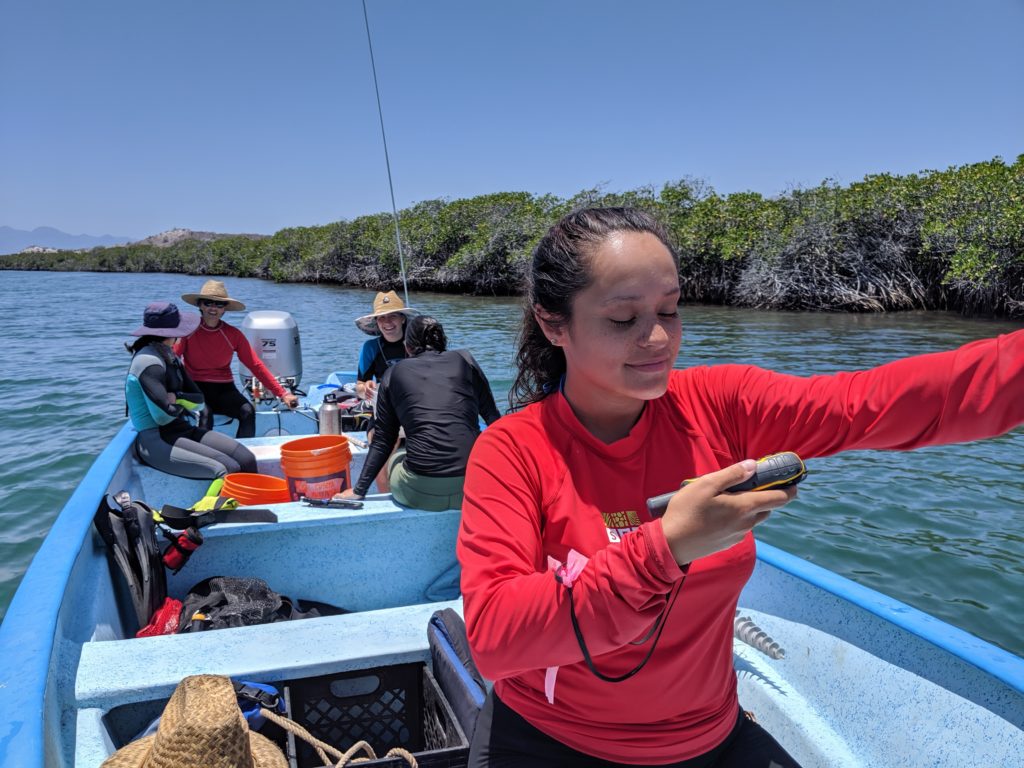
Myself, navigating with a GPS (Photo: Dorota Szuta)
Once all the samples were dried and put in their respective vials, the next project started: Benthic Biomass! Our team went back out into the Estero to weigh biomass of the invertebrates that grow on mangrove shoots. My main role was navigator, and I also helped with scraping the organisms from the shoots, removing water from the contents (cowboy with a rope-style), and weighing them. The lovely Dorota Szuta who is a sponge and tunicate expert identified organisms, recorded the data, and brought the shoots to the boat, which was the MVP, the heart and the brain to the project. We finished sites on the main channel, lagoon, and side channels in one day!
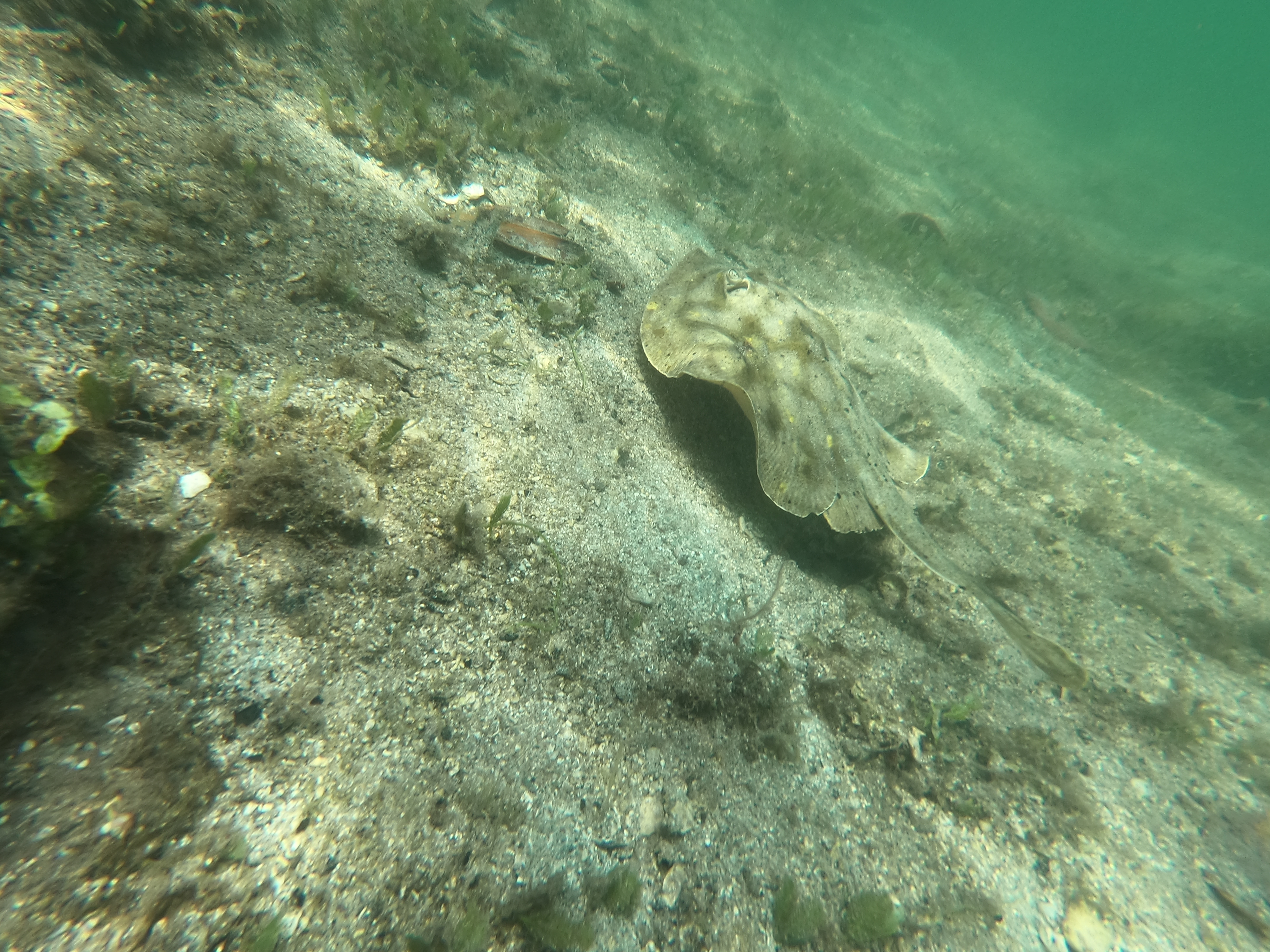
Cortez Stingray cruising along the bottom of the sand
Next project: Fish Surveys. Again we traveled within the Estero, we learned new species, and made a species identification PowerPoint, but one thing was different – no origami. Also a few of us on the team dived in shallow water to survey the fish. We learned different species of grunt, snapper, stingray, parrotfish, wrasse, damselfish, and more!
There were other tasks done that related to other projects. For example, Diana Steller and I dived to put in receivers for the turtle tagging project in a non-planned matching wetsuit, hat, and shirt. This was my first dive in Mexico and my first time working underwater with a receiver. The dive consisted of finding the GPS point of the old receiver, dropping cinder blocks with chains attached, descending to attach the receiver to the cinder block. For the second receiver, we used a screw anchor which involved kneeling on the sand and twisting a metal bar into the sand in order to attach the receiver. We also had an audience: a three-banded butterflyfish that took residence in between the cinderblocks.
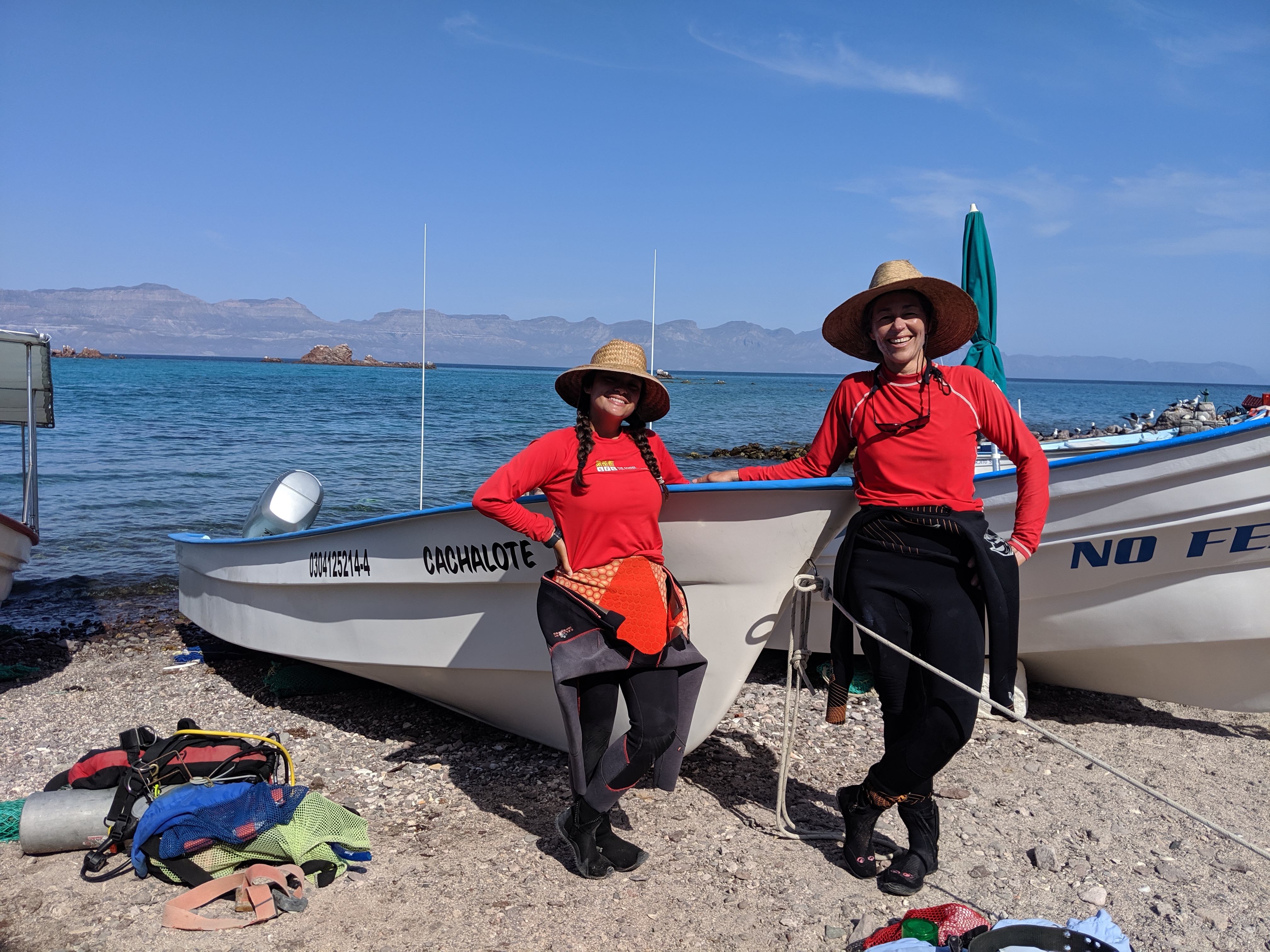
Diana Steller and myself about to go on our dive to plant new turtle receivers (Photo: Dorota Szuta)
A sentence that I never expected to say is “I went diving for turtle poop”. Before this trip, I never thought about what turtle poop looked like. Here’s some turtle poop history: one component of this ongoing turtle project is to find out where the turtles spend most of their time and what they eat, since Hawksbill sea turtles are Critically Endangered and they are the most threatened out of all turtle species. In the past, researchers that came to El Pardito would put cameras on the turtles to track what they ate and their interactions. But it was hard to see exactly what they wanted to consume. Years ago, Diana and her past graduate student, Dorota found poop (which they thought was human at the time) that had green specks of algae, tunicate, and other benthic life. It was the perfect opportunity to find out what these turtles consume!
Flash forward to now: myself and others had our faces a foot above the sand scanning for turtle poop. There have been 13 poops found in the past, and after about three dives/snorkel trips, we, unfortunately, found 0. There was one potential poop that Dorota and myself collected but it disintegrated.
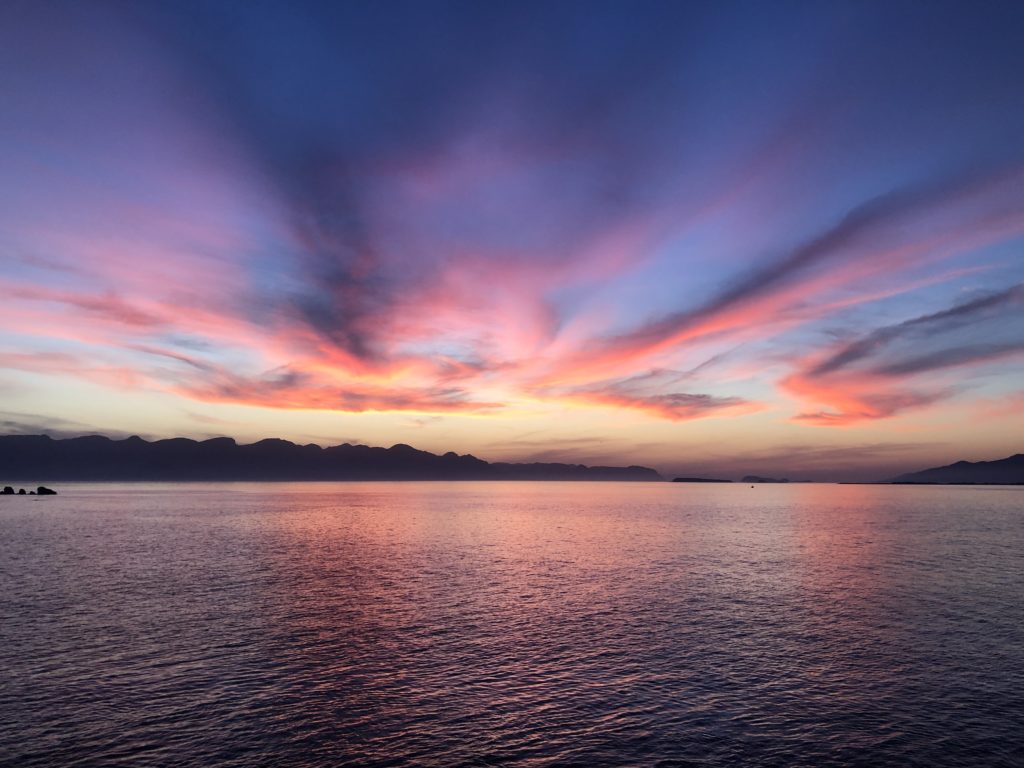
Sunset from El Pardito (Photo:Kelly Zilliacus)
On a happier and non-poop-related note, El Pardito and the neighboring islands were home to the most amazing sunsets and star gazing. Luckily while we were there, we went as a group to hike, explore, and watch the full moonrise at a nearby island. The views were breathtaking (I may have also been out of breath from running up the hill to catch pictures of the sunset from the top).
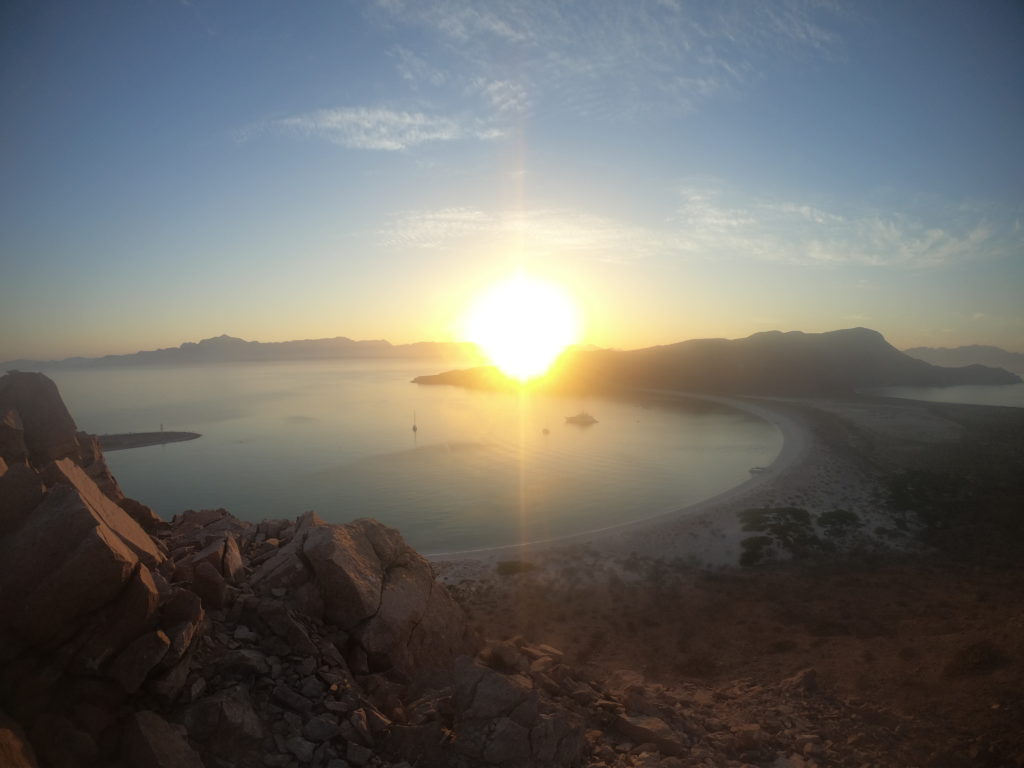
Sunset from the top of a hill on a nearby island.
Besides the Turtle projects, there was a project focused on the Manta Rays. Two wonderful scientists, Melissa, a Ph.D. student from UCSC and Nerea, who was working on her postdoc, worked very hard to retrieve drone footage of the rays.
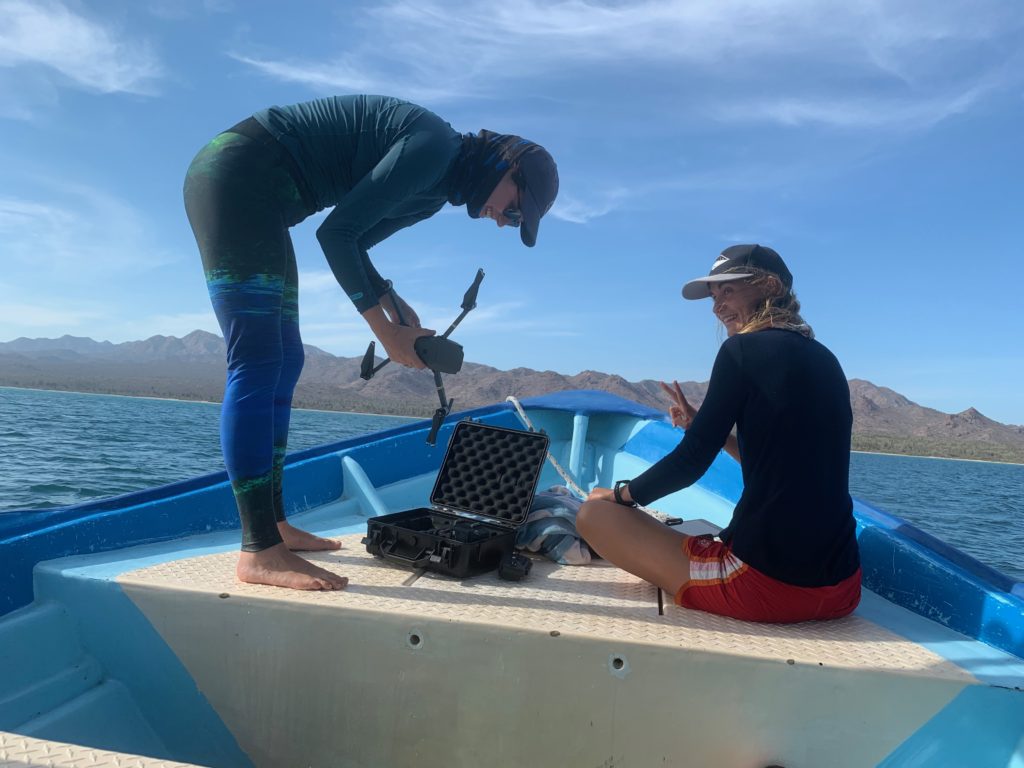
Melissa and Nerea prepping the drone to capture manta ray footage
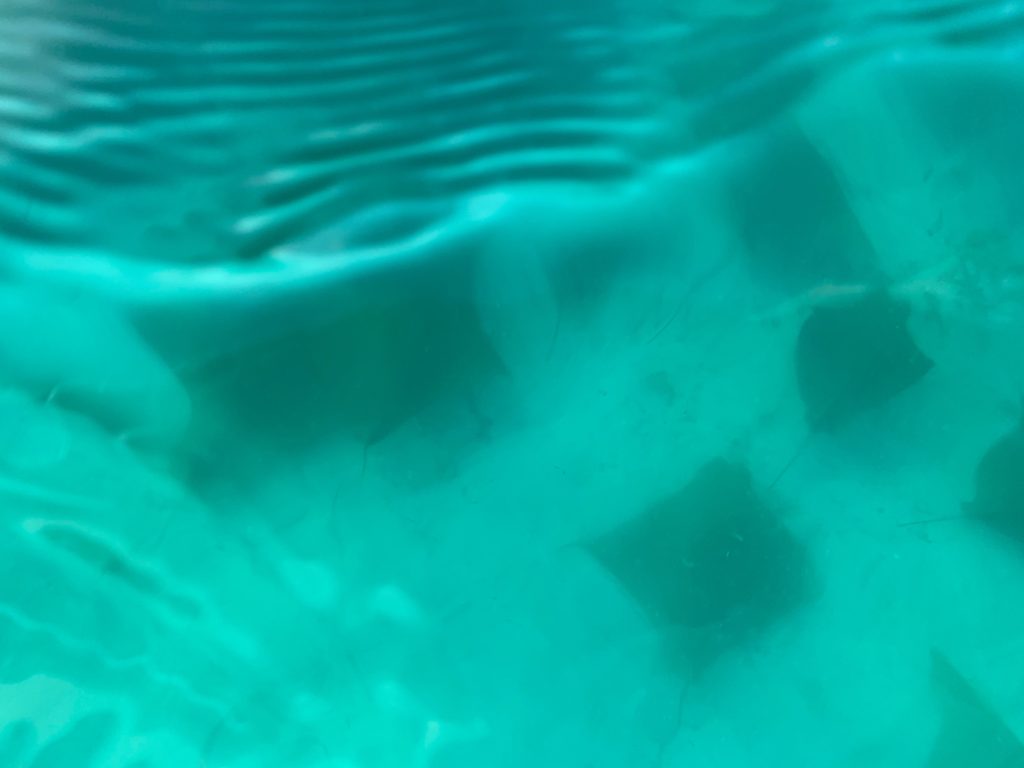
My view of the manta rays, swimming below and around the boat
Although I didn’t directly help with their project, they let me go with them to watch them in action. It was very exciting to see them work together to find big groups of rays and follow them with the drone. This involved Nerea watching the screen (under a towel) and Melissa driving the drone. They got amazing videos of the manta rays while I watched the water looking for manta ray splashes.
I want to also give a shout out to the 2019 Our World-Underwater Scholarship Society interns. I am incredibly proud to be in the same cohort of interns and excited to share experiences with them and the OWUSS family.
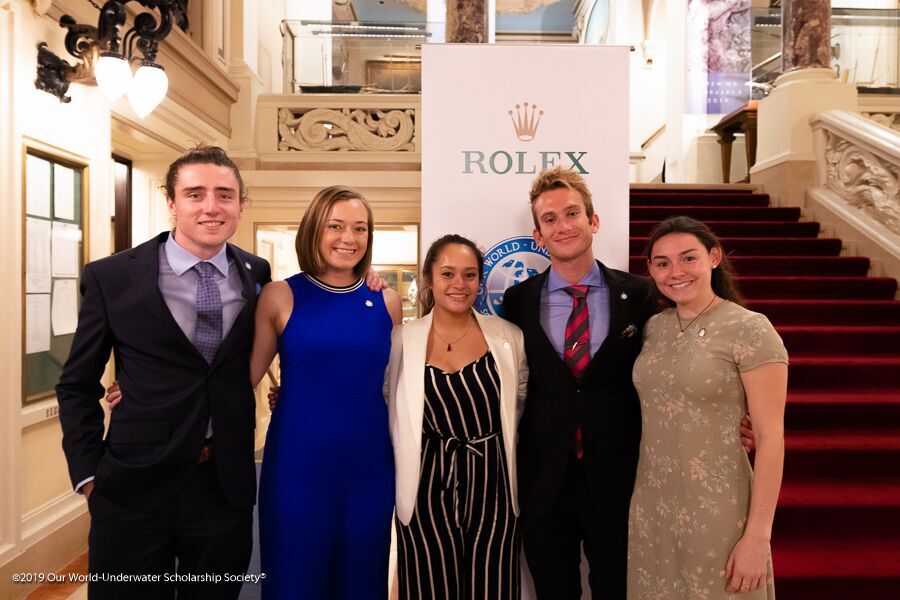
2019 OWUSS Interns (Left to right): Ben Farmer (REEF Marine Conservation Intern), Liza Hasan (AAUS Mitchell Scientific Diving Research Intern), myself, Michael Langhans (National Park Service Intern) and Abbey Dias ( DAN Diver’s Safety Education Intern)
I am so grateful that I had the chance to go on this research trip and I look forward to helping with other research and dive here in California.
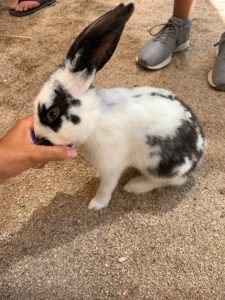
A photogenic bunny at the La Paz Serpentarium
Bonus content: Some of us visited the La Paz Serpentarium where we got to see snakes, birds, alligators, foxes, and feed some guinea pigs and rabbits.


I have read your article, it is very informative and helpful for me. I admire the valuable information you offer in your articles. Thanks for posting it.
Thank you for reading my articles! I really appreciate it!